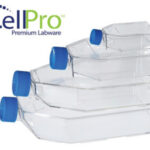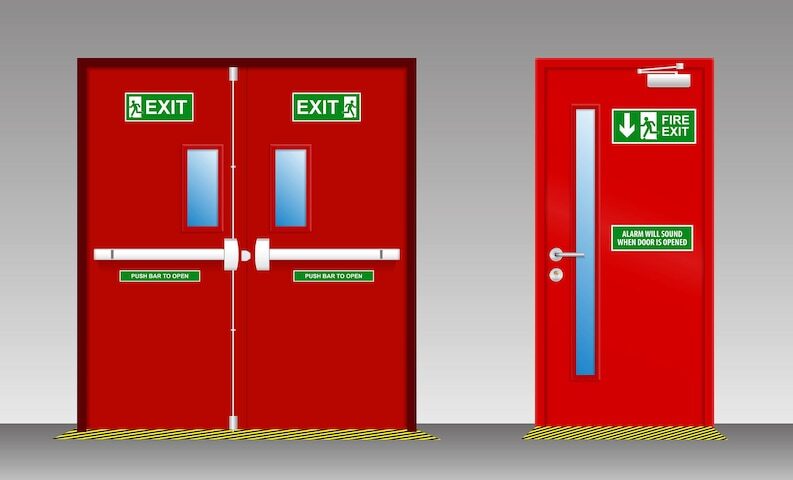In the fast-paced realm of modern business, efficient order fulfillment is no longer just a competitive advantage; it has become a necessity. As customer expectations for prompt and flawless deliveries continue to rise, The need for new and improved order fulfillment solutions becomes increasingly critical.
By embracing strategic optimizations, businesses can not only enhance customer satisfaction but also boost operational efficiency. In this article, we will unveil a comprehensive roadmap consisting of eight proven steps that will guide you through the transformation from a state of chaos to a well-orchestrated order fulfillment machine.
In today’s landscape, where speed, accuracy, and reliability are paramount, a streamlined order fulfillment process holds the key to success.
Whether you operate an e-commerce store, manage a distribution center, or handle large-scale logistics, the steps outlined here will empower you to revolutionize your operations, improve productivity, and exceed customer expectations.
So, let’s dive into the journey from chaos to control and unlock the secrets of a seamless order fulfillment process.
1. Evaluate and Map Your Current Process:
To initiate the pursuit of a streamlined order fulfillment process, it is imperative to gain a comprehensive understanding of your existing workflow. By identifying limitations, streamlining processes, and pinpointing areas for optimization, you can lay the groundwork for an efficient and effective operation.
Create a detailed process map that visually represents each step, from order placement to final delivery. This evaluation will provide valuable insights and serve as a foundation for subsequent optimizations.
2. Embrace Automation:
Automation is a game-changer when it comes to streamlining order fulfillment. Leverage order fulfillment solution such as order management systems (OMS) and warehouse management systems (WMS), to automate repetitive tasks like order processing, inventory management, and shipping label generation.
By eliminating manual errors and reducing processing time, automation can significantly enhance the efficiency of your fulfillment operations.
3. Optimise Inventory Management:
Maintaining the right inventory levels is crucial to meet customer demand while minimizing storage costs. Implement an inventory management system that provides real-time visibility into stock levels, enables accurate demand forecasting, and helps you identify slow-moving or obsolete items. Adopting just-in-time inventory practices can also minimize excess inventory and free up capital for other business needs.
4. Streamline Order Processing:
Smooth order processing is the backbone of efficient fulfillment. Implement order routing algorithms that assign orders to the most suitable fulfillment center or warehouse based on proximity and available inventory. Standardise order intake procedures and utilize digital systems to capture and process orders swiftly. Integrate your order management system with your e-commerce platform to ensure seamless data flow.
5. Enhance Warehouse Layout and Organization:
The physical layout and organization of your warehouse play a crucial role in streamlining order fulfillment. Optimize your warehouse layout to minimize picking and packing times, reduce travel distances, and ensure easy access to popular products.
Implement barcode or RFID tracking systems to improve inventory accuracy and speed up order picking. Clearly labeled storage areas and streamlined put-away processes can further enhance efficiency.
6. Establish Efficient Shipping and Carrier Partnerships:
Choosing the right shipping and carrier partners is vital to ensure reliable and timely deliveries. Evaluate different carriers based on their service quality, rates, and coverage.
Establish strategic partnerships with selected carriers to negotiate favorable terms and expedited shipping options. Integrate your systems with the carriers’ platforms to streamline label printing, tracking, and return processes.
7. Implement Quality Control Measures:
Maintaining quality standards throughout the fulfillment process is crucial to minimize errors and customer dissatisfaction. Introduce quality control checkpoints at key stages such as order verification, picking, packing, and shipping.
Consistently perform audits and evaluations of performance to identify opportunities for enhancement. Invest in employee training programs to enhance accuracy and efficiency.
8. Continuously Monitor and Improve:
Achieving streamlined order fulfillment is an ongoing journey, not a one-time task. Continuously monitor key performance indicators (KPIs) such as order cycle time, order accuracy, and customer satisfaction. Leverage data analytics and reporting tools to identify trends, bottlenecks, and areas that require attention. Regularly review and update your processes based on insights gained, emerging technologies, and evolving customer expectations.
Order fulfillment solutions you can implement:
1. Embrace Technology: Adopting an advanced order management system (OMS) or warehouse management system (WMS) can revolutionize your fulfillment process. These robust software solutions offer features like inventory tracking, order routing, automated workflows, and real-time analytics.
By leveraging technology, you can streamline order processing, optimize inventory management, and gain valuable insights to make data-driven decisions.
2. Implement Order Batching: Order batching involves grouping multiple orders with similar characteristics or destinations to fulfill them more efficiently.
By consolidating orders with similar products or shipping locations, you can minimize travel time within your warehouse, reduce labor costs, and optimize packaging and shipping processes. This approach can significantly enhance productivity and reduce order cycle times.
3. Utilise Pick and Pack Strategies: Implementing efficient pick and pack strategies can greatly streamline your fulfillment process. Consider using zone picking, where warehouse staff are assigned specific areas to pick items from, reducing travel time and increasing efficiency.
Batch picking, where multiple orders are picked simultaneously, can also improve productivity. Additionally, optimizing packing stations with clearly labeled packaging materials and standardizing packing procedures can further enhance accuracy and speed.
4. Leverage Cross-Docking: Cross-docking is a technique that bypasses the traditional warehousing process by transferring products directly from inbound shipments to outbound vehicles for immediate delivery. This approach minimizes the need for storage space, reduces handling costs, and expedites order fulfillment.
By strategically implementing cross-docking for certain products or high-demand items, you can streamline your operations and achieve faster order turnaround times.
5. Integrate with Third-Party Logistics (3PL) Providers: Collaborating with experienced 3PL providers can offer numerous benefits in terms of order fulfillment. These providers specialize in efficient warehousing, inventory management, and transportation logistics.
By outsourcing certain aspects of your fulfillment process to reliable 3PL partners, you can leverage their expertise, infrastructure, and distribution networks to streamline operations, reduce costs, and enhance overall efficiency.
6. Implement Real-Time Inventory Tracking: Accurate inventory management is crucial for efficient order fulfillment. By implementing real-time inventory trackings systems, such as RFID or barcode technologies, you can gain precise visibility into stock levels, location, and movement. This allows you to proactively manage inventory, prevent stockouts, and optimise reorder points, ensuring seamless order fulfillment and minimizing delays.
7. Enhance Communication and Collaboration: Effective communication and collaboration are essential for streamlined order fulfillment. Implement a centralized communication system, such as a cloud-based collaboration tool or an integrated messaging platform, to facilitate real-time information sharing among team members, departments, and external partners. This enables swift problem-solving, reduces errors, and ensures a smooth flow of information throughout the fulfillment process.
8. Continuously Monitor and Improve: Streamlining order fulfillment is an ongoing process that requires continuous monitoring and improvement. Regularly analyze key performance indicators (KPIs) such as order cycle time, order accuracy, on-time delivery rates, and customer satisfaction. Use these insights to identify bottlenecks, address issues promptly, and implement process refinements.
Embrace a culture of continuous improvement to stay agile, adapt to changing customer needs, and optimise your order fulfillment operations.
By implementing these order fulfillment solutions, you can transform your operations from fragmented and inefficient to streamlined and highly effective.
Remember, each business is unique, so tailor order fulfillment solutions to suit your specific needs and leverage technology and strategic partnerships to achieve a competitive edge in today’s dynamic market.
Conclusion:
Streamlining your order fulfillment process with the right order fulfillment solutions is essential to meet customer expectations, improving operational efficiency, and maintain a competitive edge.
By following these eight steps – evaluating and mapping your current process, embracing automation, optimizing inventory management, streamlining order processing, enhancing warehouse layout and organization, establishing efficient shipping partnerships, implementing quality control measures, and continuously monitoring and improving – you can transform your fulfillment operations from chaos to control.
Remember, consistency, adaptability, and a customer-centric approach are key to sustained success in the dynamic world of order fulfillment.












